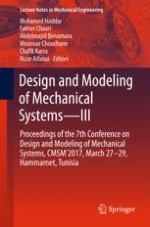2018 | OriginalPaper | Buchkapitel
Multiobjective Assembly Line Resource Assignment and Balancing Problem of Type 2
verfasst von : Hager Triki, Wafa Ben Yahia, Ahmed Mellouli, Faouzi Masmoudi
Erschienen in: Design and Modeling of Mechanical Systems—III
Aktivieren Sie unsere intelligente Suche, um passende Fachinhalte oder Patente zu finden.
Wählen Sie Textabschnitte aus um mit Künstlicher Intelligenz passenden Patente zu finden. powered by
Markieren Sie Textabschnitte, um KI-gestützt weitere passende Inhalte zu finden. powered by
